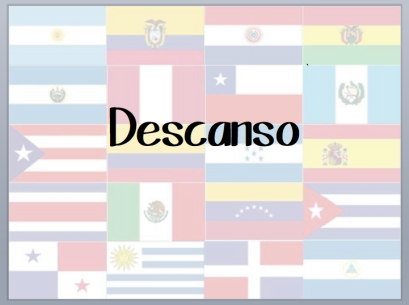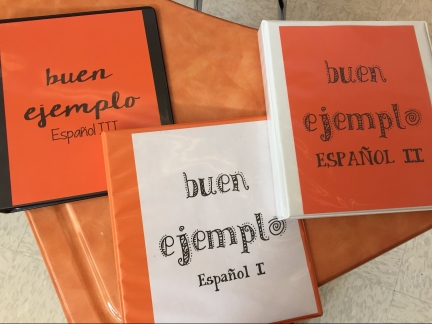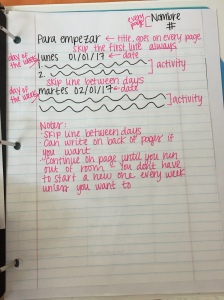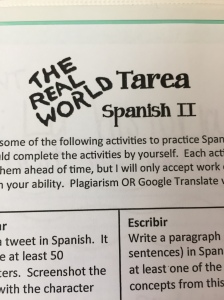For first few posts of Me llamo Profe Hess, I will be describing procedures in my Spanish classes. When I first began teaching (only 4 years ago), I read tons of blogs explaining the importance of establishing procedures at the beginning of the year or semester. However, I couldn’t figure out how to accomplish this. I will be sharing some successful procedures that I use in my Spanish classes. To see previous entries, click here.

Imagine it. A brand new teacher, who never had a student teaching stint, trying to survive teaching 90 minute block classes. Some days she would have way too much content; some days she would teach her little heart out for 35 minutes then look at the clock and want to cry. Well friends, that teacher was me 3 years ago. Every day I struggled with timing, which led to misbehavior because students were often left to “work on something.”
Luckily, I had a wonderful vice principal who shared a trick that I have found works exceptionally well for block classes. She suggested that we take a break halfway through the class everyday. This helped me in two ways: 1) I knew when half of the class was over and could adjust my plans, and 2) it functioned as a reward for the students. As long as we covered enough material and they behaved well, they get to take a break.
Thus, the descanso (break) was created. I made a PowerPoint with links to my favorite songs (in Spanish) on YouTube. Each slide has the name of the artist, country the artist is from, and the name of the song. I set an alarm on my phone for approximately halfway through each class. When the alarm sounds, I get to a stopping point, and a student picks the number for the day. Students have an assigned number based on their last name in my class, so I go in number order. They have to say the number of the slide they pick in Spanish, which is a great review of the ever-important numbers!

Here is one of my favorite descanso songs from Chilean rapper Ana Tijoux. It focuses on the battle for free education in Chile.
I project the song on the board, and students can move around and socialize the entire time the song is playing. The primary rule is that students must be back in their seat ready to work before the song ends. I keep the red bar on the screen so that students can see the time remaining. Thanks YouTube! If all students are not in their seat by the end of the song, the class loses the descanso for the next day. It’s amazing how they police each other. There’s almost always a student that announces 30 seconds left. Another rule is that students have to stand the entire time of the song. This is a physical activity break, so standing is a must. Students can finish an activity or work on something at their desks, but they must stand.
Aprendizaje. I look forward to descansos almost as much as the students do. I get to listen to my favorite music, and I get a 2-5 minute break as well. Overall, the descanso has helped with my timing of lessons and class management. I think that it’s a good use of time, especially with block schedules. I have found that having the descanso to look forward to makes students more productive at the beginning of class, and they are ready to work again after the break.
Soon this will be available for download. If you would like a copy of it, please post a comment with your email address!
Do you do something similar in your classes? What are your thoughts on a descanso?











